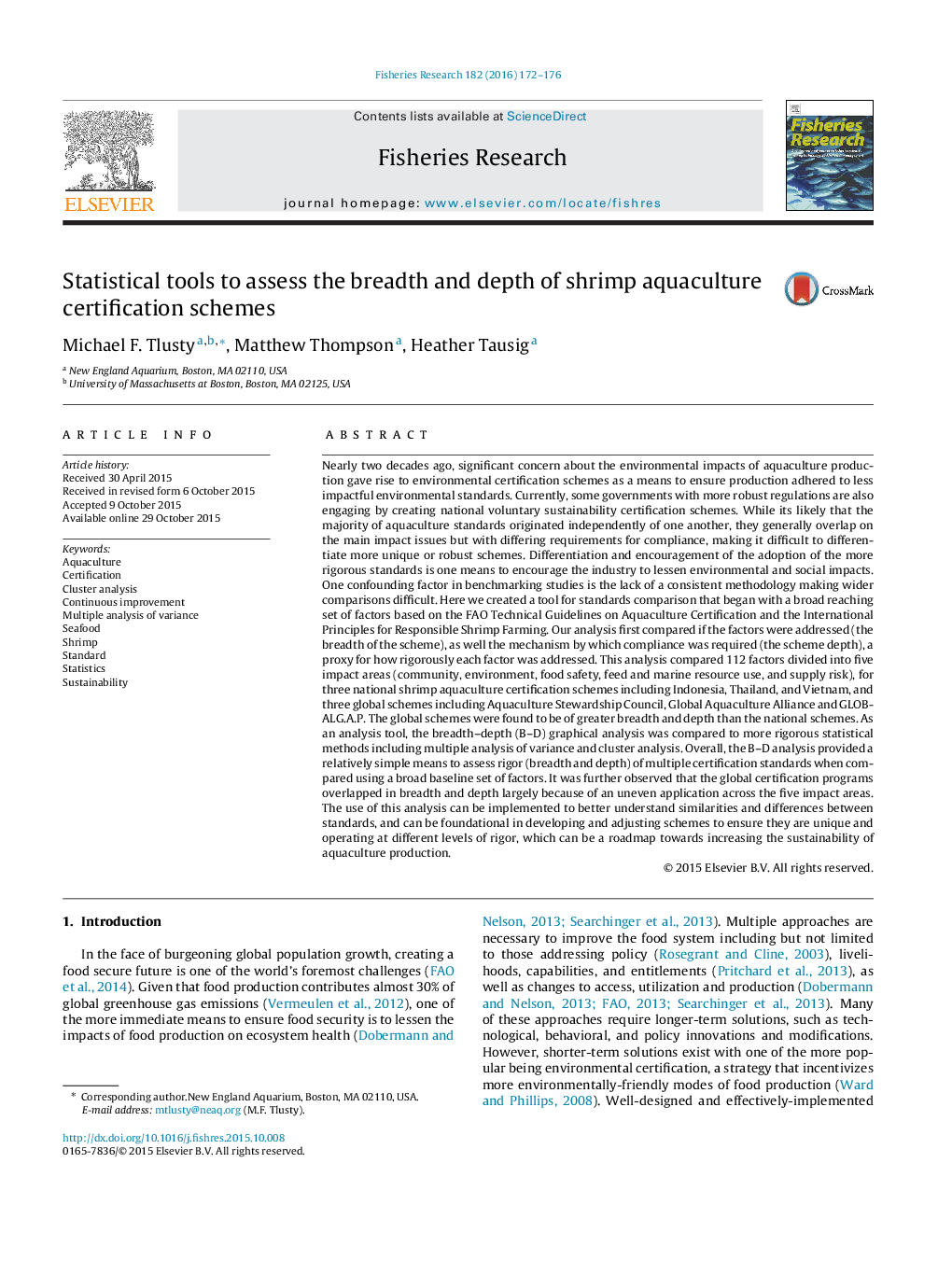| کد مقاله | کد نشریه | سال انتشار | مقاله انگلیسی | نسخه تمام متن |
|---|---|---|---|---|
| 4542678 | 1626787 | 2016 | 5 صفحه PDF | دانلود رایگان |
Nearly two decades ago, significant concern about the environmental impacts of aquaculture production gave rise to environmental certification schemes as a means to ensure production adhered to less impactful environmental standards. Currently, some governments with more robust regulations are also engaging by creating national voluntary sustainability certification schemes. While its likely that the majority of aquaculture standards originated independently of one another, they generally overlap on the main impact issues but with differing requirements for compliance, making it difficult to differentiate more unique or robust schemes. Differentiation and encouragement of the adoption of the more rigorous standards is one means to encourage the industry to lessen environmental and social impacts. One confounding factor in benchmarking studies is the lack of a consistent methodology making wider comparisons difficult. Here we created a tool for standards comparison that began with a broad reaching set of factors based on the FAO Technical Guidelines on Aquaculture Certification and the International Principles for Responsible Shrimp Farming. Our analysis first compared if the factors were addressed (the breadth of the scheme), as well the mechanism by which compliance was required (the scheme depth), a proxy for how rigorously each factor was addressed. This analysis compared 112 factors divided into five impact areas (community, environment, food safety, feed and marine resource use, and supply risk), for three national shrimp aquaculture certification schemes including Indonesia, Thailand, and Vietnam, and three global schemes including Aquaculture Stewardship Council, Global Aquaculture Alliance and GLOBALG.A.P. The global schemes were found to be of greater breadth and depth than the national schemes. As an analysis tool, the breadth–depth (B–D) graphical analysis was compared to more rigorous statistical methods including multiple analysis of variance and cluster analysis. Overall, the B–D analysis provided a relatively simple means to assess rigor (breadth and depth) of multiple certification standards when compared using a broad baseline set of factors. It was further observed that the global certification programs overlapped in breadth and depth largely because of an uneven application across the five impact areas. The use of this analysis can be implemented to better understand similarities and differences between standards, and can be foundational in developing and adjusting schemes to ensure they are unique and operating at different levels of rigor, which can be a roadmap towards increasing the sustainability of aquaculture production.
Figure optionsDownload as PowerPoint slide
Journal: Fisheries Research - Volume 182, October 2016, Pages 172–176
